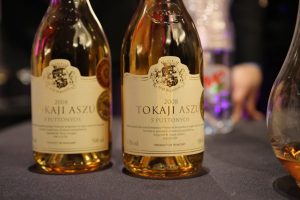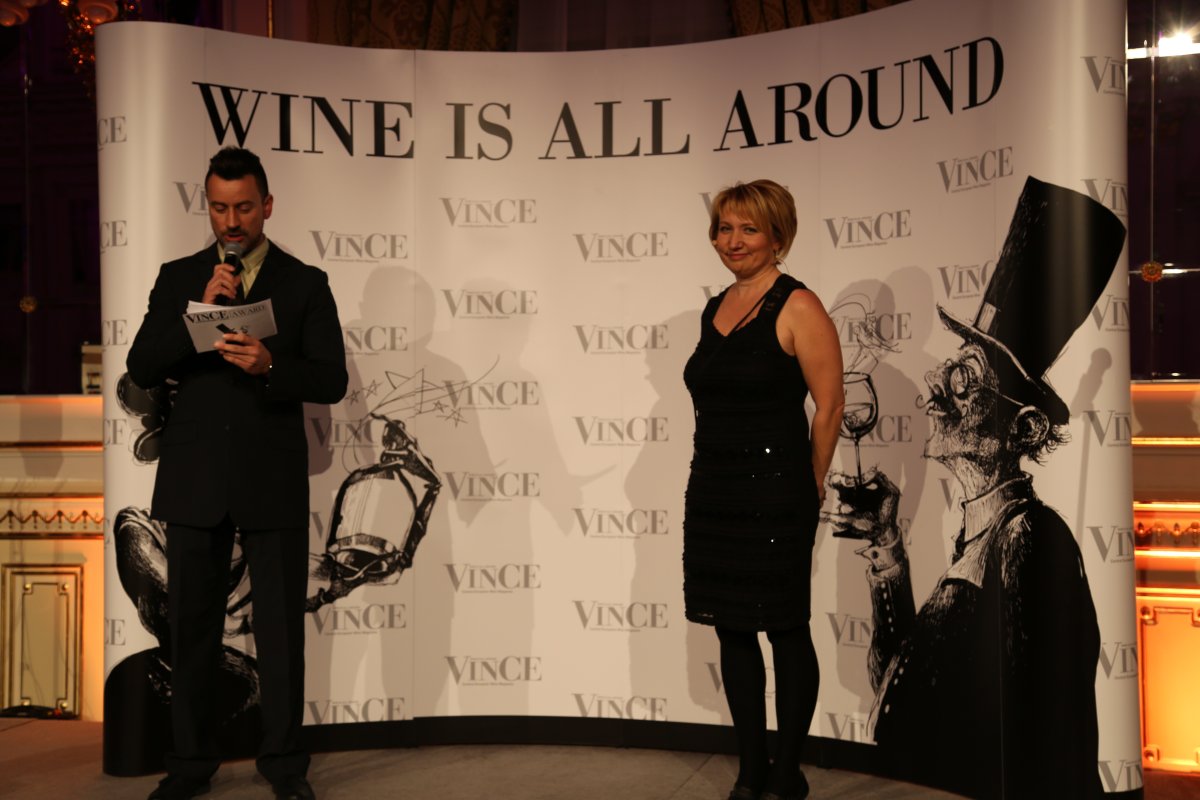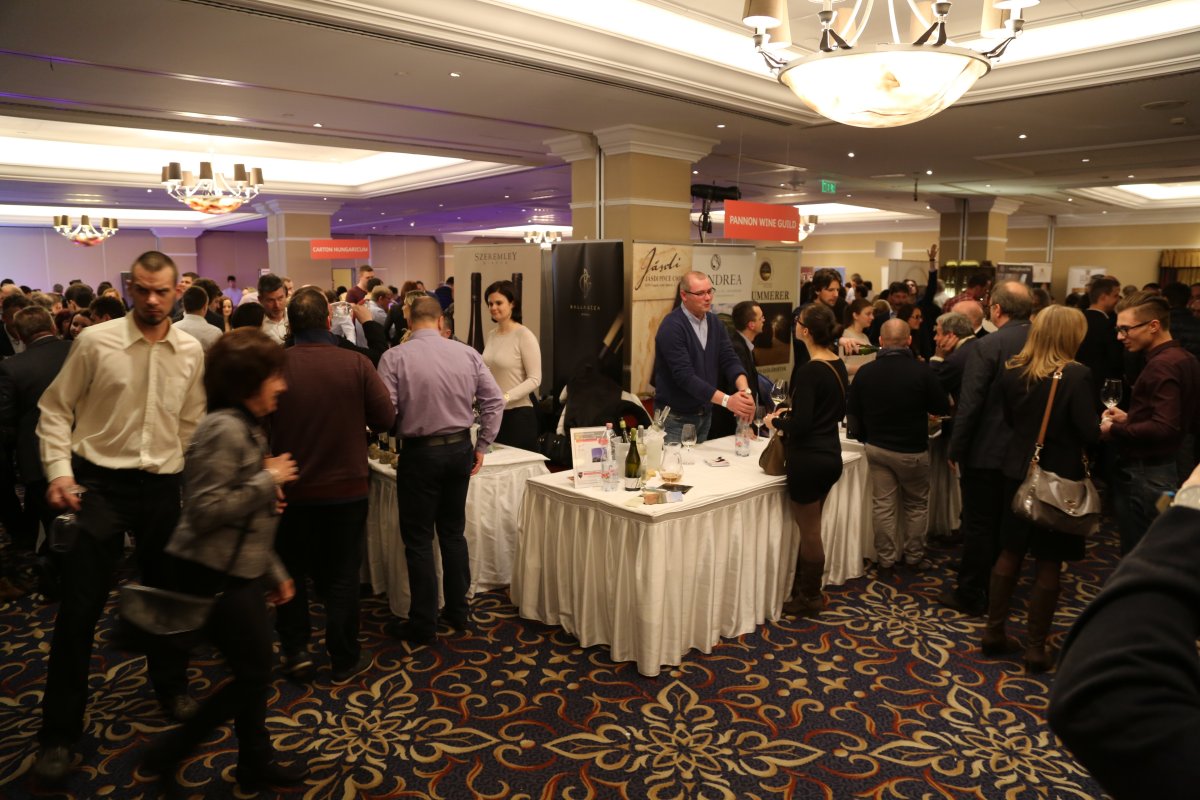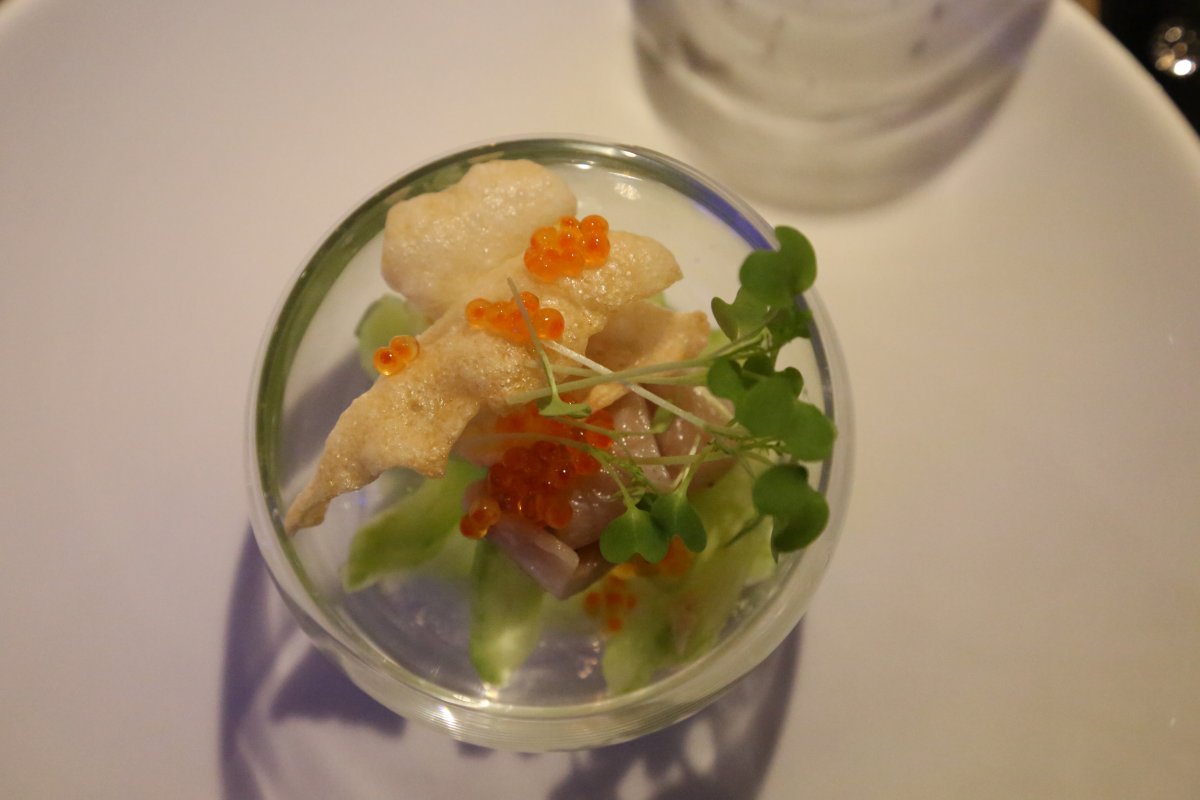The Venue
The 6th annual VinCE Wine Show was recently held at the luxurious and inviting Corinthia Hotel in Budapest in early March 2015. This event is organized by the VinCE Central European Wine Magazine and showcases Hungarian Wines as well as plenty of winery attendees from elsewhere in Central Europe.
The Event
VinCE features not only the wineries who generously pour a number of their wines regardless of vintage – but also Master Classes which focus on specific regions within Central Europe – guest speakers and a gastronomical element.
Two wineries that stand out for quality are St. Andrea and Demeter.
Several premium wineries were represented here by Hungarian importers – including Chateau Mouton Rotchschild located near Bordeaux in France, Peter Lehmann of the Barossa Valley in Australia and port wine from Real Companhia Velha, a winery established in Portugal some 250+ years ago.
Claudia Schug, a sommelier who is living in Germany but has deep roots in both Napa and Sonoma gave as comprehensive a talk about wines from California as possible in a span of nearly two hours. Of all the master classes I dropped in on this was the most attended. Many in the audience were perhaps familiar with several brands from California but not all the variations in climate, soils and diversity of varietals grown there.
I seek out wines and producers I have never tried – and it was a unique experience to try so many styles of wines from numerous Central European & beyond countries – but there is something to be said for familiarity – with vineyards, regions and taste profiles during the tasting of these California wines.
Tokaji Wines
I was first introduced to both dry as well as the Aszú sweet topaz colored wines from the Tokaj wine region when I first visited Hungary a few years back. I’ve been wanting to explore more of these wines ever since – especially some of the premium Aszú dessert wines. Fortunately a master class was held at VinCE specifically focusing on wines from Tokaj.
Along with the dessert wines which is what Tokaj is most famous for – there is certainly an effort to produce premium dry white wines – often from the Hungarian Furmint varietal (a white grape). The wines of this varietal we tried all had very good acidity – with certain characteristics reminiscent of a dry Riesling.
There is a reason the Aszú wines are so well known Internationally. These wines are rich, complex and flavorful with plenty of residual sugar (indicated by the Puttonyos number – higher being more sugar) and excellent acidity. Fortunately many well regarded Hungarian producers of this style of wine were all pouring in one room, and for one who truly enjoys these wines, this was a real treat.
One tasting was conducted by several Masters of Wine and covered 9 different wines from Tokaj – ranging from several different dry wine styles (including Furmint) ranging to the 5 and 6 puttonyos – to the final wine, an Eszencia – a wine extremely rich in sugar and flavor – like drinking a viscous combination of molasses, ginger, caramel, prunes and brown sugar (my first introduction to this rare and expensive style of wine).The 2007 Crown Estates Tokaji Essencia had 500+ G/L RS and was only 3.3% alcohol. In some years this style of wine has 800 to 900 G/L RS. Even at 500 G/L I could clearly see the concentration of sugar in solution – almost crystalline looking in the glass when you held it at a certain angle.
The Eszencia is a style of wine from Tokaj that is extremely rare because there is so little of it – and 1/2 liter bottles can often go for hundreds of dollars each. Along with the diversity and quality of Hungarian wines across the board represented at VinCE, this one wine was also arguably one of the highlights of the show.
It is one thing (and not very exciting we might add) to try a sweet wine linear in its sugar composition but lacking in complexities throughout. In general the sweetness of the best wines of Tokaji are wonderfully balanced by excellent acidity.
My ideal Tokaji dessert wine has a lot of sugar, complexity of flavor, character of fruit on the nose, a balancing acidity that leaves a slight tartness on the mouth – especially on the finish and the use of oak on each wine is one of the most important aspects to me. Any Tokaji dessert wine that finishes with a roughness or course flavor of oak on the finish in my opinion significantly detracts from this style of wine (I am extremely sensitive to this and it does not taste appealing).
A high quality Tokaji dessert wine will be balanced between sugar and acidity, rich in flavor and aroma and complemented by the oak – with certain non oak flavors imparted but definitely not notes of the actual oak (IE a woodsy component which I sometimes find on the finish of some of these wines).
I love how there is such a wide range of aroma and flavor in the Tokaji dessert wines.
For Tokaj wine lovers or those looking for more information about this unique region of Hungary – Tokaj Spring is now an annual event (in 2015 held between April 24th and the 26th) that allows visitors to gain a better understanding of this wine region, discover historical vineyards, try plenty of wines – and ultimately the weekend ends with the Great Tokaj Wine Auction – held in a historic castle. Visit: www.tokajiborlovagrend.hu/en





































Excellent article, Dave. Wish I was back in Budapest. We lived there for 6 months in 2009/2010. It was a cold winter but we loved the city and enjoyed some delicious wine, pálinka and some delicious inexpensive food at Centrál Kávéház.
M and G
Bangkok, Thailand
Michael – good to hear from you. It can be brutally chilly in Budapest in the winter – but one stays warm when visiting – inside with good eats and some wine 🙂